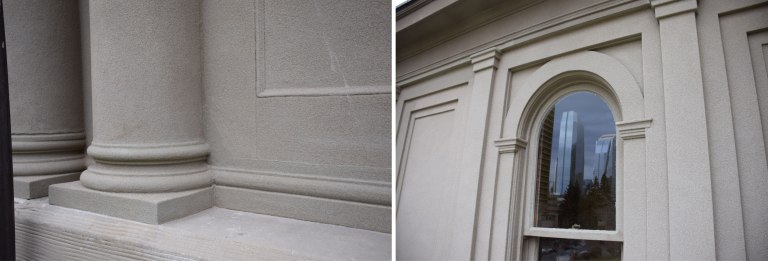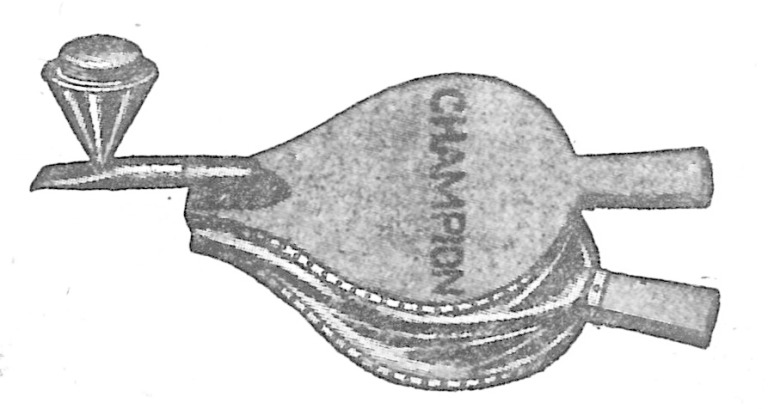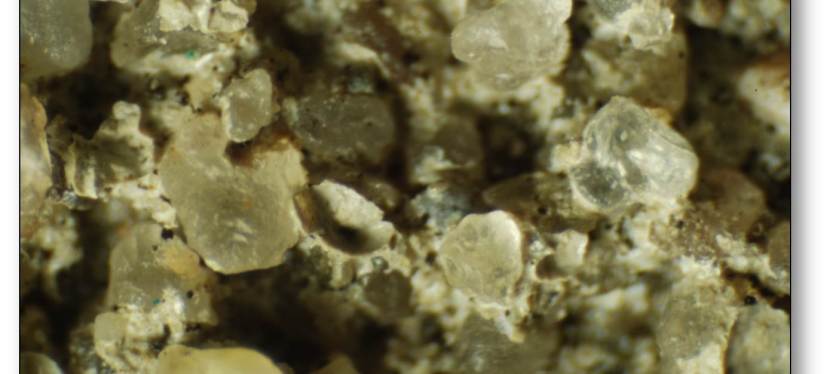Sand painting is a faux finish technique that was not uncommon for exteriors of masonry buildings in the early part of the twentieth century. By dusting sand onto paint while still tacky, painted wood or metal details were made to resemble stone. If you guessed you were looking at magnified grains of sand in the teaser photograph above, you were right. The photograph, taken through a binocular microscope, is actually of a sand paint sample taken from the Senator Lougheed Residence in Calgary.


From a distance, it’s hard for most people to distinguish between the real stone and sand painted details. That’s exactly the intent of faux finishes. Decorative painting techniques, such as wood graining and marbling, were extensively used for interior surfaces of early twentieth century buildings where, for example, cheaper pine doors could be painted with a wood grained technique to imitate higher quality oak or burled maple. For exteriors of masonry buildings, a faux stone finish was sometimes used where lighter weight materials were needed because quarried stone would have been too heavy or costly. Common examples of traditionally sand painted building features in Alberta are the large, projecting stamped sheet metal cornices found on pre-World War One commercial buildings. Lightweight metal cornices could be ordered from catalogues, shipped in sections, easily assembled at the tops of commercial facades, then sand painted to imitate stone.

The sand painting technique is applied in three layers: primer first (sometimes tinted if necessary), followed by a base coat of paint and then sand is cast on the still tacky paint, either by hand or blown on with a device. Applying the sand takes a bit of time and experimenting to get a consistent cover. When dry, a final coat of paint and sand is applied to complete the faux stone surface.
The sand painting process is a relatively simple one; the hard part is the colour match. Colour matching is important for both components of the sand paint and that also takes a bit of experimenting to get it right, especially if you’re trying to match the colour of adjacent sandstone units. Have another look at the magnified teaser photograph. The sand grains are clear quartz and meant to transmit the paint colour below, in addition to providing the imitation sandstone texture. The final colour comes from the paint itself, however, since the addition of a sand layer changes the viewer’s perception of the base paint colour in daylight, it’s helpful in the colour matching process to prepare a number of side-by-side samples of similar hues (see figure below) so that a best match can be made.
The next time you pass by a sandstone building or one with sandstone features, stop and take a closer look.


Written By: Tom Ward, Manager of the Heritage Conservation Advisory Services



Sandpainting is being used in the renewal of the pressed metal cornices of the Buena vista Block in Edmonton.
Cool! Thanks, Darrel.
Who knew!! You learn new things every day – great site by the way.
Thanks, John! Glad you enjoyed the post 🙂
I saw this technique used on the exterior window frames for the historical facades at BCE Place Toronto. Very convincing.
George Washington used this technique in 1796 on his mansion Mt Vernon. They describe it as rustication.
http://www.mountvernon.org/site/virtual-tour/
I think by “rustication” they are referring to the beveling of the edges of the wood to look like stone, not that actual sand paint.